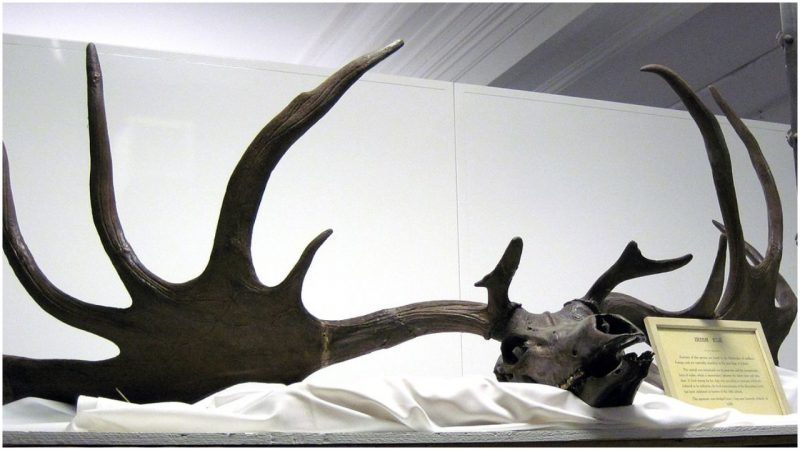Two men, Raymond McElroy and Charlie Coyle, went fishing in early September in Lough Neagh, a large freshwater lake in Northern Ireland.
They caught something in their net about a half mile from shore in 20 feet of water, but what they caught they definitely weren’t expecting.
The men brought home an enormous Irish elk skull that’s estimated to be more than 10,500 years old, of an elk species is now extinct. The skull and antlers measured six feet across.
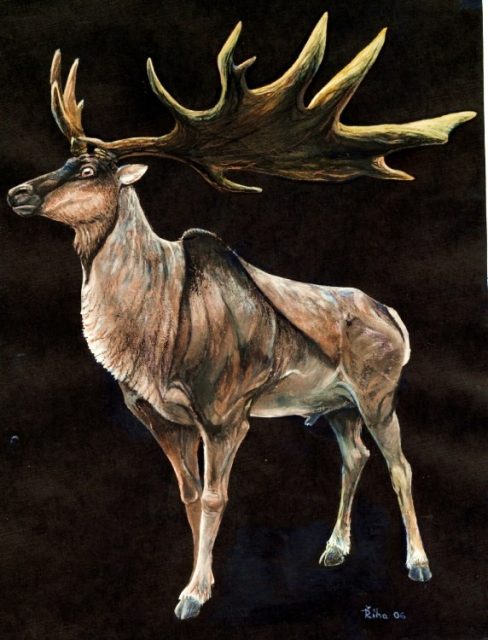
“It came up in the net on the side of the boat,” Raymond McElroy told Belfast Live. “I thought it was a bit of black oak to begin with. I was shocked to begin with when I got it over the side and saw the skull and antlers.”
Their goal that day was to catch pollan, a fish found in Lough Neagh and just four other lakes in Ireland.
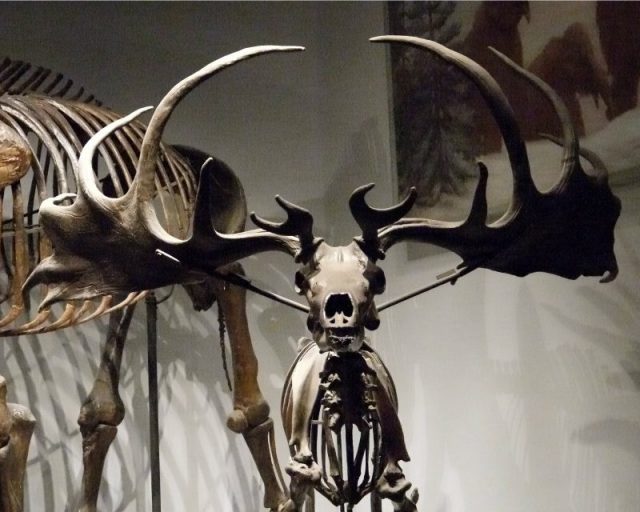
He’s keeping his find in his garage “until experts decide what to do with it.”
Their new friend dredged from the lake is actually misnamed, as it was neither purely Irish nor an elk. Up to seven feet tall, the animal was a giant species of deer and was known to have lived all over Europe as well as northern Asia and even Africa. Its antlers could span 12 feet.
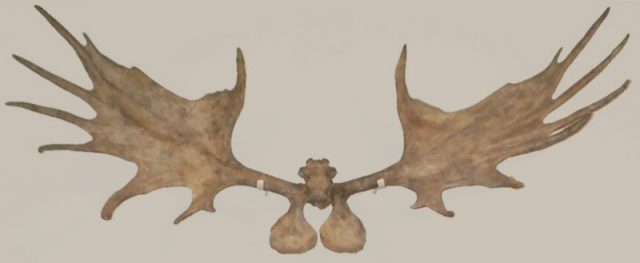
The species became extinct around 10,000 years ago.
It’s believed to have gotten the name “Irish” because well-preserved fossils of the large deer were commonly found in the lake sediments and peat bogs of Ireland.
Lough Neagh is the home of other Irish elk remains. The Daily Mail reports, “A 14,000-year-old Irish elk jawbone was found on the lakebed in 2014 by Kenneth James, the curator of the Ulster Museum in Belfast, Northern Ireland. The bone was found by Mr James at a spot close to the location of the newly discovered skull and antlers, suggesting they may be from the same creature.”
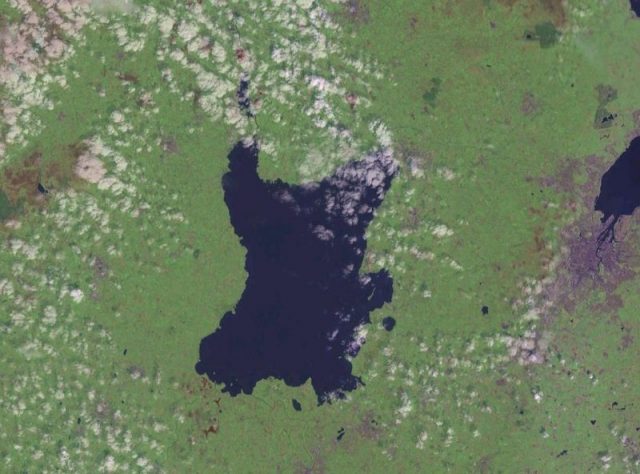
A fisherman named Felix Conlon also found a set of skull and antlers there in 1987.
These deer lived in Ireland when the weather was suitable on the grass plains, but years later, forests began to grow, Mike Simms, a paleontologist at the Ulster Museum, told BelfastLive.
Unfortunately for the large beasts, “giant antlers aren’t great in the forest,” Simms said. “Environmental change is what caused their extinction.”
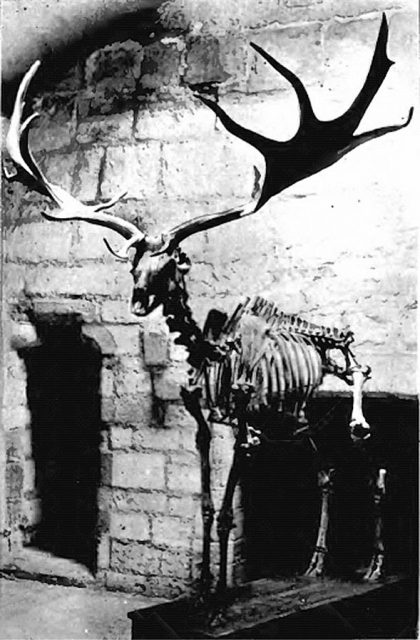
The Irish elk also has another claim to fame, according to the Smithsonian. “In the eighteenth and nineteenth centuries, many scientists believed that the extinction of animals was impossible.
Fossils, they believed, were just the remains of animals that explorers would eventually find somewhere hidden on Earth. The remains of the Great Elk was one of the animals used by French scientist Georges Cuvier to show that extinction did in fact take place.”
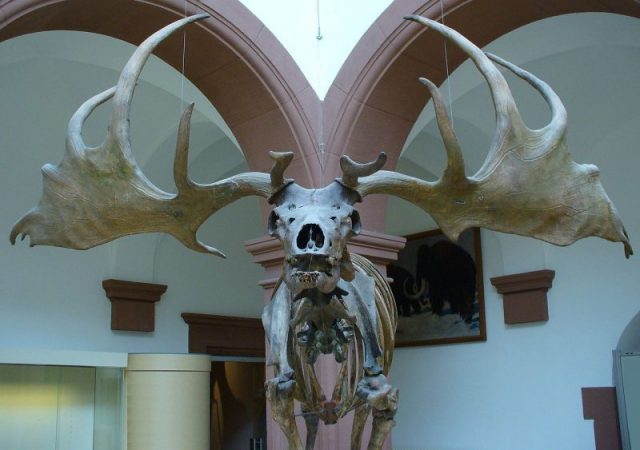
CC BY-SA 3.0
While the species became extinct about 10,500 years ago in Europe, it held on in Siberia until some 6,500 years ago.
There is a skeleton of the species at the Museum of Natural History in New York City. The exhibit says, “Weighing around 1,500 pounds and rivaling a large moose in size, the Irish elk is one of the largest known deer. Originally discovered in bog deposits in Ireland, the Irish elk, or Megaloceros giganteus, lived on the European mainland as well.”
Things might have gotten pretty wild back in the day. The museum says that that he Irish elk’s enormous antlers, some of which reached a 13-foot spread, “were used in ritualized combat between males.”
Read another story from us: The plan to bring Woolly Mammoths back to life
A website, Mother Nature Network, had a startling fate in mind for the species: “As with other animals that lived in the icy north during the Pleistocene, preserved specimens of the Irish elk can be readily found in melting permafrost, making it a prime candidate for being cloned.”
Nancy Bilyeau, a former staff editor at Entertainment Weekly, Rolling Stone, and InStyle, has written a trilogy of historical thrillers for Touchstone Books. For more information, go to www.nancybilyeau.com.
